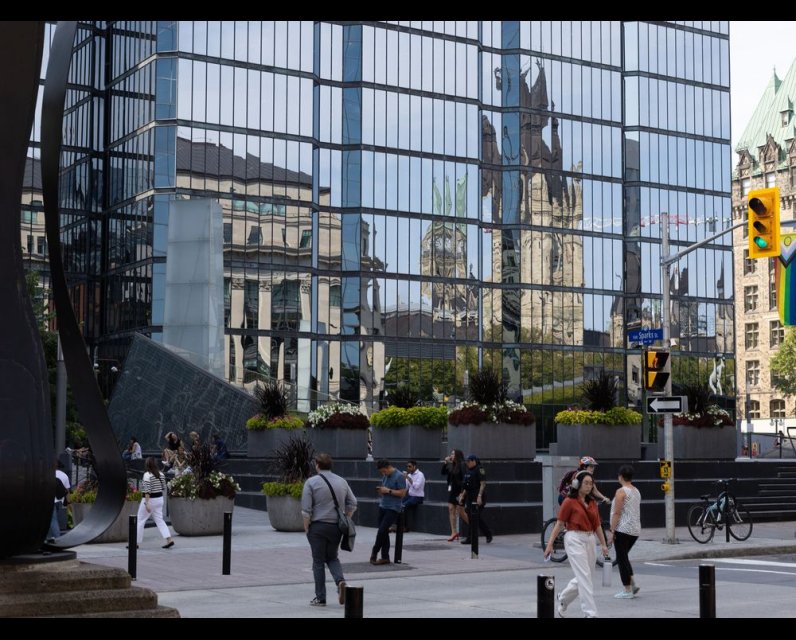Source Feed: National Post
Author: Simon Tuck
Publication Date: July 17, 2025 - 17:49
New report says Ottawa to blame for higher consumer prices after spending splurge
July 17, 2025

The Trudeau government’s spending splurges — less than Bank of Canada interest rate policies — were largely responsible for soaring inflation during the pandemic, a new report has concluded.
The report, conducted by two economists at the C.D. Howe Institute, points the finger at Ottawa’s unfunded spending spree that acted as “helicopter drops” of money for the private sector.
In 2020, the report says, 20.7 million Canadians out of an adult population of 30.3 million received income from one of the federal pandemic-related programs. In 2020, the programs are estimated to have cost $270 billion — about 12.5 per cent of Canada’s gross domestic product (GDP) — and have since grown to about $360 billion to date.
While the programs generally succeeded in providing relief to individuals and businesses, and buttressed the economy during a crisis, the think tank says injecting that much “nominal wealth” into an economy while unemployment has been relatively low led to an inflation burst and permanently higher prices.
“Whether this wealth takes the form of new money or new debt is largely irrelevant,” the report says.
Benjamin Tal, the deputy chief economist of CIBC World Markets, agreed that loose fiscal monetary policy contributed to the pandemic-era price hikes, but thinks the central bank’s low interest rates also played a role.
“There is no question about the fact that very accommodating fiscal and monetary policies were behind the acceleration in inflation,” Tal said.
According to the Consumer Price Index (CPI), prices rose 11.4 per cent between January 2020 and December 2022. Although the pandemic started in China in December 2019 and the first case was reported in Canada on January 25, 2020, inflation didn’t spike for more than a year. In fact, prices were rising at relatively normal rates until May 2021, and didn’t peak until June 2022 when inflation hit 8.1 per cent, the highest rate in almost four decades.
But while the C.D. Howe economists, David Andolfatto and Fernando Martin, are critical of the spending, their assessment of the Bank of Canada’s policies at that time are more nuanced. They agree with the Bank of Canada’s own assessment that it can be faulted for not raising interest rates quickly enough to suppress inflation at that time. They also argued that it could be criticized for not doing a better job communicating how it intends to achieve its inflation targets. But they conclude that there was ultimately little the central bank could have done to curb the price spikes.
The paper acknowledges that the pandemic was a unique situation that included a series of inflationary and deflationary pressures.
Prices rose in part because the supply of some products tightened, for example, due to factories being closed or experiencing reduced hours. Transportation became more expensive due to shipping delays and congestion at many ports. There were also shortages of some raw materials, such as lumber and metals, which also contributed to inflation.
There was also increased demand for certain things, such as real estate, furniture, exercise equipment and home entertainment gadgets.
Some of that demand increase was due to consumers having more disposable incomes. Many were saving money from working from home and not being able to go out or travel, while others got wage increases or (especially those in health care) were working longer hours. Income from government supports added to the demand. The result of reduced supply and rising demand was increased costs.
Gasoline was among the products hit hardest by inflation, with a price increase of more than 50 per cent over that two-year period. Food and transportation jumped between 15 and 20 per cent, while appliances and rent increased by between 10 and 15 per cent.
Finance Canada, the federal department responsible for fiscal policy, was not immediately available for comment.
Since the pandemic ended, however, prices have not come back down for a number of reasons.
Katherine Judge, senior economist at CIBC Capital Markets, said inflation remained a challenge after the pandemic because many consumers had pent-up demand and excess savings, while long-term changes such as more people working from home and the retirement of many baby boomers also played a role. In recent months, she added in an email, import tariffs imposed by Ottawa amid trade disputes have raised prices.
Statistics Canada reported earlier this week that
Canada’s inflation rate accelerated to 1.9 per cent in June
, up from 1.7 per cent the previous month.
National Post
stuck@postmedia.com
Our website is the place for the latest breaking news, exclusive scoops, longreads and provocative commentary. Please bookmark nationalpost.com and sign up for our daily newsletter, Posted, here.
The commanding officer of the Cameron Highlanders, an Ottawa reservist unit, has been temporarily removed from his position in the aftermath of a controversy involving soldiers who are alleged to have posted racist comments and sexual images in a private Facebook group. Army commander Lieutenant-General Michael Wright said in a statement released to media Thursday that he was taking steps to address the “inappropriate behaviour” of Canadian Army members involved in the “Blue Hackle Mafia” Facebook group.
July 17, 2025 - 20:50 | Nancy Macdonald | The Globe and Mail
Michael says that after the Granfondo crash, city officials met with his team to reassess the course and safety measures.
July 17, 2025 - 20:41 | Victoria Femia | Global News - Canada
Water activities are back on at Lac Leamy in Gatineau, but a ban on swimming at the beach remains in place, the National Capital Commission posted Thursday evening. Read More
July 17, 2025 - 20:32 | Gord Holder, Postmedia | Ottawa Citizen



Comments
Be the first to comment